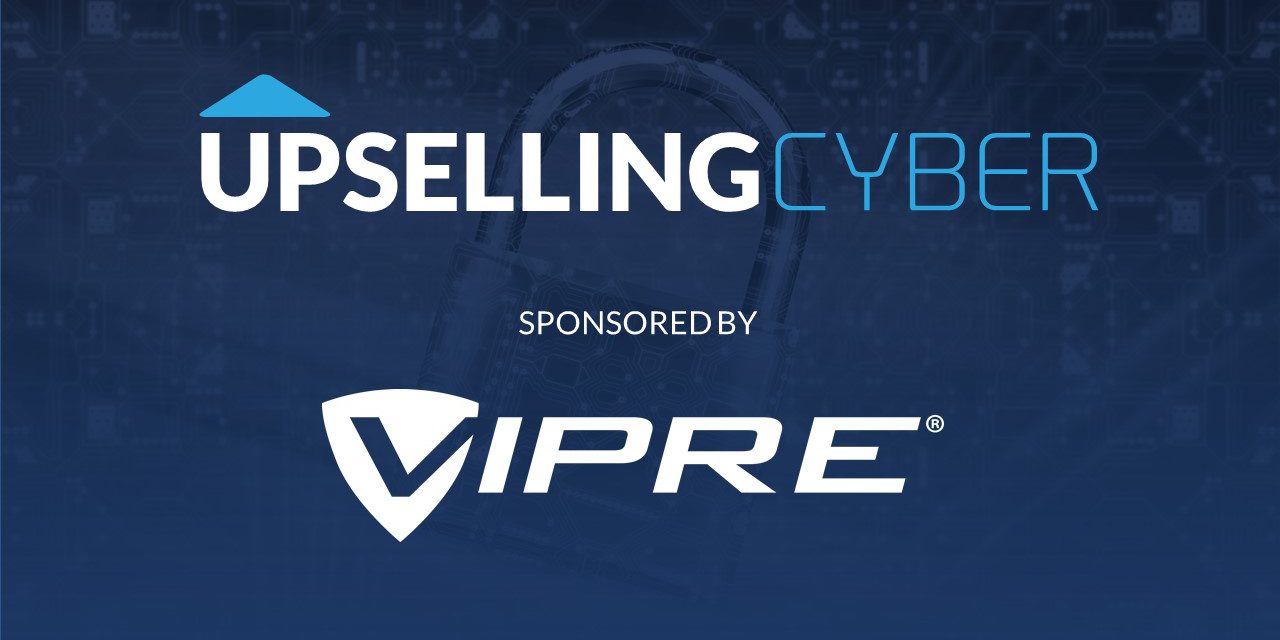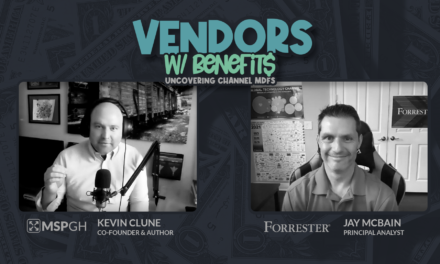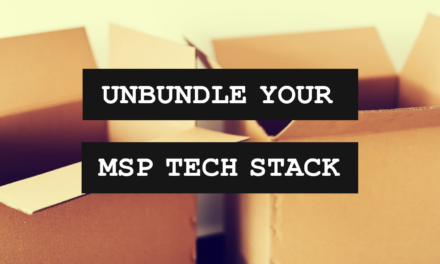5 Ways To Make Customers More Aware of Your Service Upgrades
Have you ever approached an existing client to offer a security add-on, only for them to say “why didn’t you tell me about this sooner?” This is the sound of months worth of lost revenue, entirely at the hands of poor product awareness. If you are waiting until your next quarterly business review (QBR) to make your customer aware of add-on services, then you may want to think again. This is because springing these recommendations on them all at once is going to force them into a quick-decision, which will rarely play out in your favor.
Instead, what if you were leveraging content and digital advertising to make them aware of your offerings slowly over time? They are then able to consume the information at their pace and gravitate their attention toward those that interest them the most. Now when you sit down with your customer and make a recommendation (if they didn’t already reach out to you first), they have a firm grasp on what these solutions are and how they may benefit them. This now speeds up the decision making process and leads to an overall better client relationship.
Here are a few tactics to use to keep your customers informed and aware of your full menu of services on an ongoing basis:

The Power of MSPs In Cybersecurity: How to monetize security services, and recognize cross-sell and up-sell opportunities. Watch this on-demand webinar featuring Author, Kevin Clune
Update Signatures On Your Service Desk Tickets
Generating awareness is all about frequency of touches. If you think about where your existing customers interact with your company the most, it is almost guaranteed to be on your service desk in the form of support tickets. Look to leverage this attention by attaching helpful links to product information or educational content in your Technician’s email signatures so that it is accessible on every interaction.
If you would like to take this a step further, you may also create an automation workflow that sends follow up information after the completion of certain classes of tickets. For example, if a ticket is classified to “email security” you can automate a follow up email letting the Decision Makers know about the products and services that you offer to mitigate such issues. As discussed in the first rendition of Upselling Cyber, this contextual evidence will play a large role in your customer’s decision making process.
Export Your PSA Database To Place Targeted Ads
Wouldn’t it be great if you could leverage platforms like Google, Facebook, and LinkedIn to show product awareness ads to only your existing customers? The good news is that you can! This is done by creating what is called a “matched audience” which uses identifying information (such as an email address or company name) as your basis for targeting.
The best place to find such a list is in your Professional Service Automation (PSA) tool that you use to operate your business. A simple export of your PSA contacts and import into the advertising platform of your choice will be all you need to get started. From there you can show your contacts product-focused content across these networks to reinforce your messaging over time.
Send A Product-Focused Educational Newsletter
The same list exported from your PSA can also be used to routinely send an email newsletter to existing clients. I would recommend uploading this into a marketing automation platform (such as Mailchimp, Hubspot, etc.) and segmenting the list based on contact’s decision making ability. Once the list is segmented you can then send routine communications to each audience with information that they will find helpful throughout their week or month.
The reason for segmentation is that a typical endpoint user may not require high level insights into the company’s use of technology. They will benefit most from simple tips that help them become more fluent with the products and services that they already have. The Decision Makers on the other hand will benefit more from forward-thinking insights. Since they are responsible for procuring these services, they should be presented with information that keeps on top of current trends and helps become a more educated buyer.

The Power of MSPs In Cybersecurity: How to monetize security services, and recognize cross-sell and up-sell opportunities. Watch this on-demand webinar featuring Author, Kevin Clune
Retarget Customers Based On Website Activity
If you find yourself without a list in-hand, there are still ways to generate product awareness in the form of website retargeting. While this may be more difficult to filter impressions down to only existing customers, it is still a high-performing tactic nonetheless. The best way to go about this is to build an audience from visitors of pages that would only be frequented by those that you have an existing relationship with. A few examples would be your web-hosted ticket intake form, your payment portal, or company news and events.
Imagine the CFO of one of your client companies visits your payment portal to pay or view an invoice. A few hours later, they are watching their favorite podcast on YouTube and in the middle of the episode they see a video ad from your company explaining what the average cost of an email related security breach is and how cyber awareness training can reduce the risk of such events. While they may not act immediately, the awareness generated through these campaigns works to strengthen the buyer’s product knowledge on an ongoing basis and does so with the need for first-person contact.
Connect & Engage With Customers on LinkedIn
If you do want to take a more personal approach, then LinkedIn is a great place to start. If you haven’t already, look to connect with every employee at each of your client companies. While you may not have the time to strike up a conversation with every one of your endpoints users, these connections will help to amplify your content via their newsfeeds. Even if only a small percentage of them accept, a few engagements here or there will be enough to make your posts seen visible to most of the active users at the company.
As for client Decision Makers, it is important to attempt to engage with them on a regular basis, as the more engagement there is between you and them, the more the LinkedIn algorithm will favor your content in their feed. This is why you should also react and comment on their posts as often as possible. This will make them feel the need to reciprocate, thus increasing their chances of seeing your product awareness content overall.
Watch as Author Kevin Clune and VIPRE’s Jason Norton go “beyond the blog” to discuss trending tactics, product-content SMBs actually care about, & more!

SPONSORED BY ZEST
















